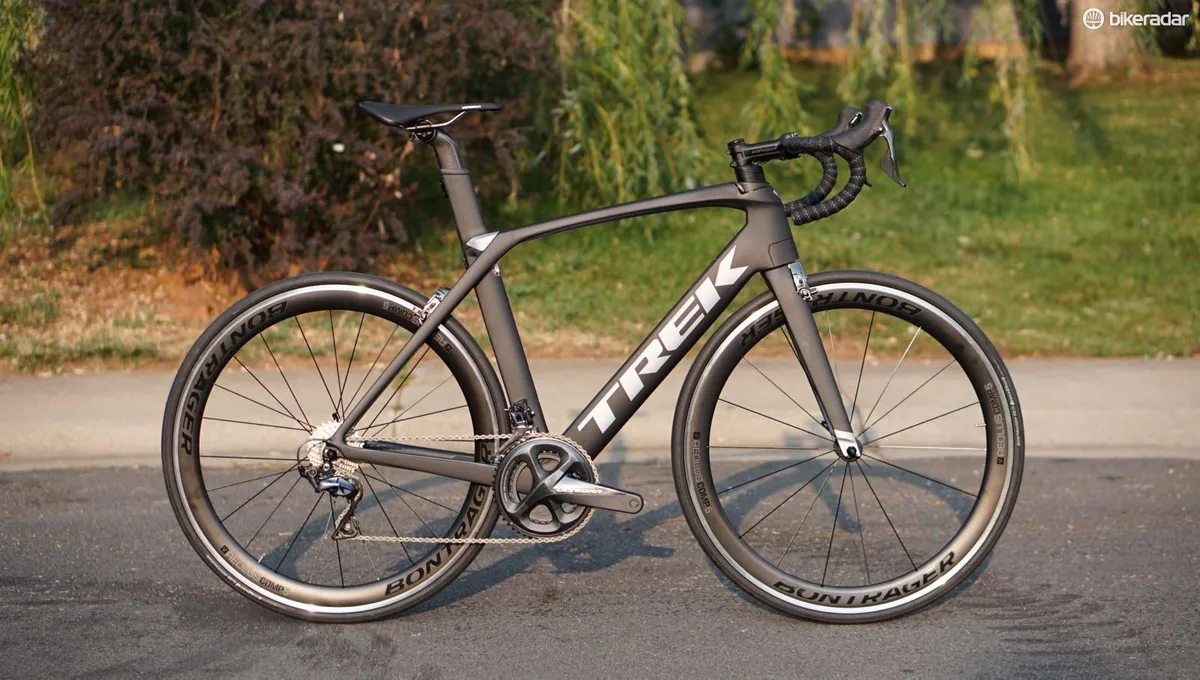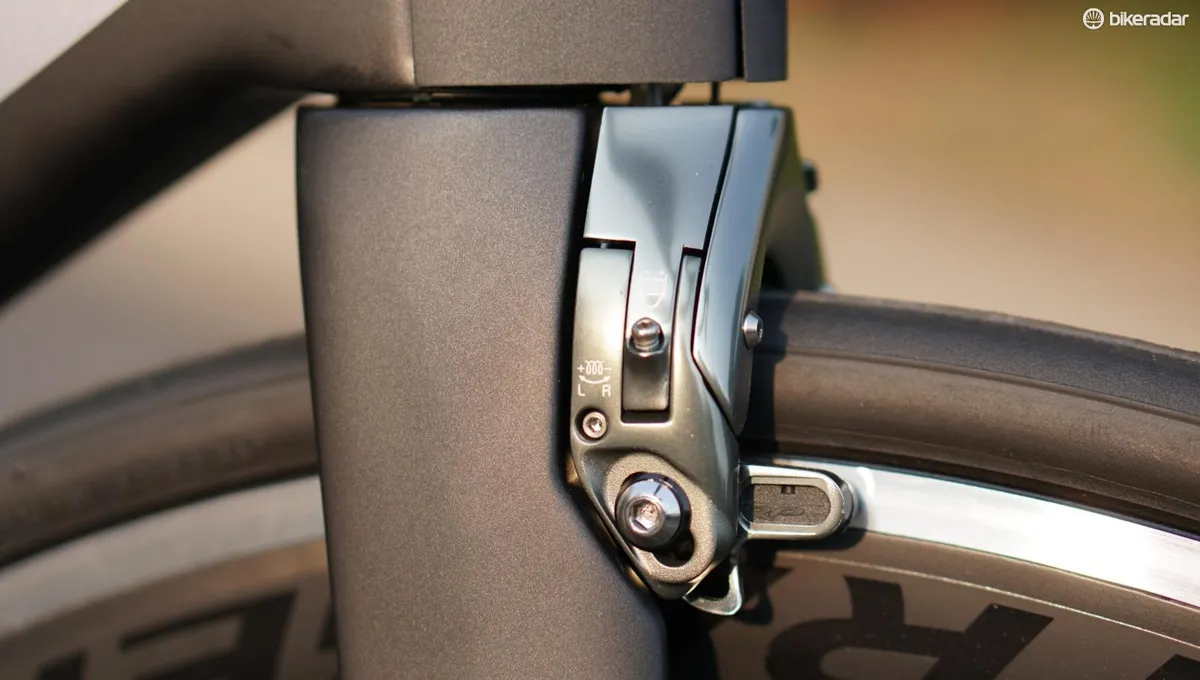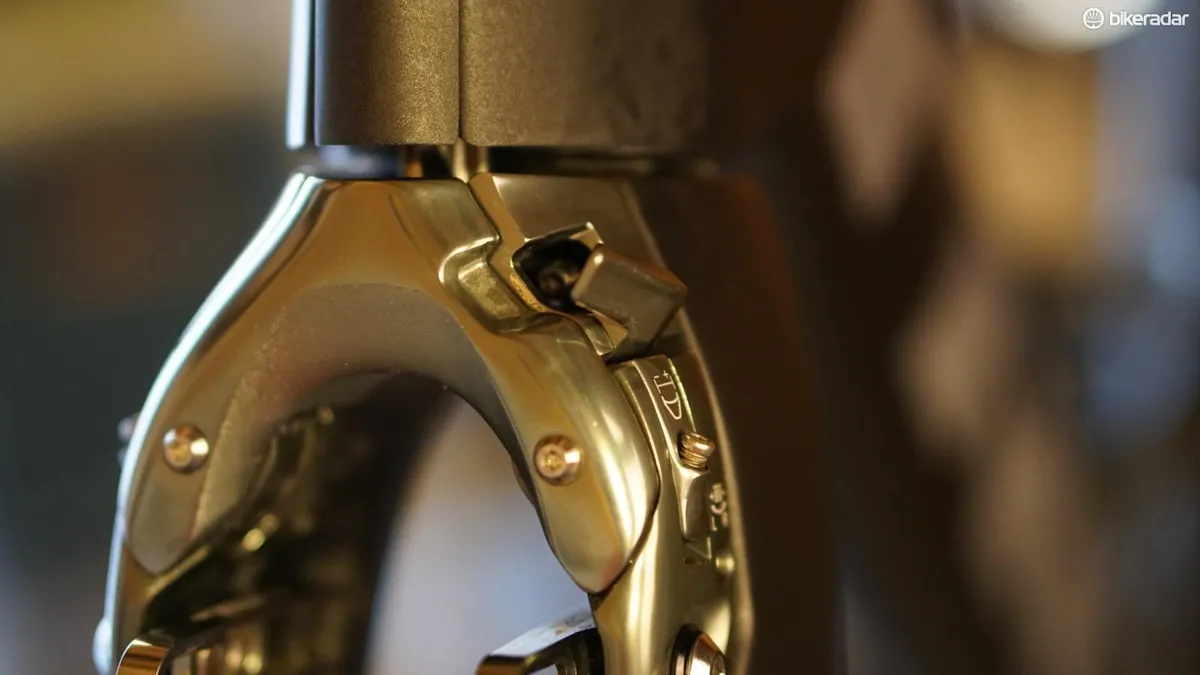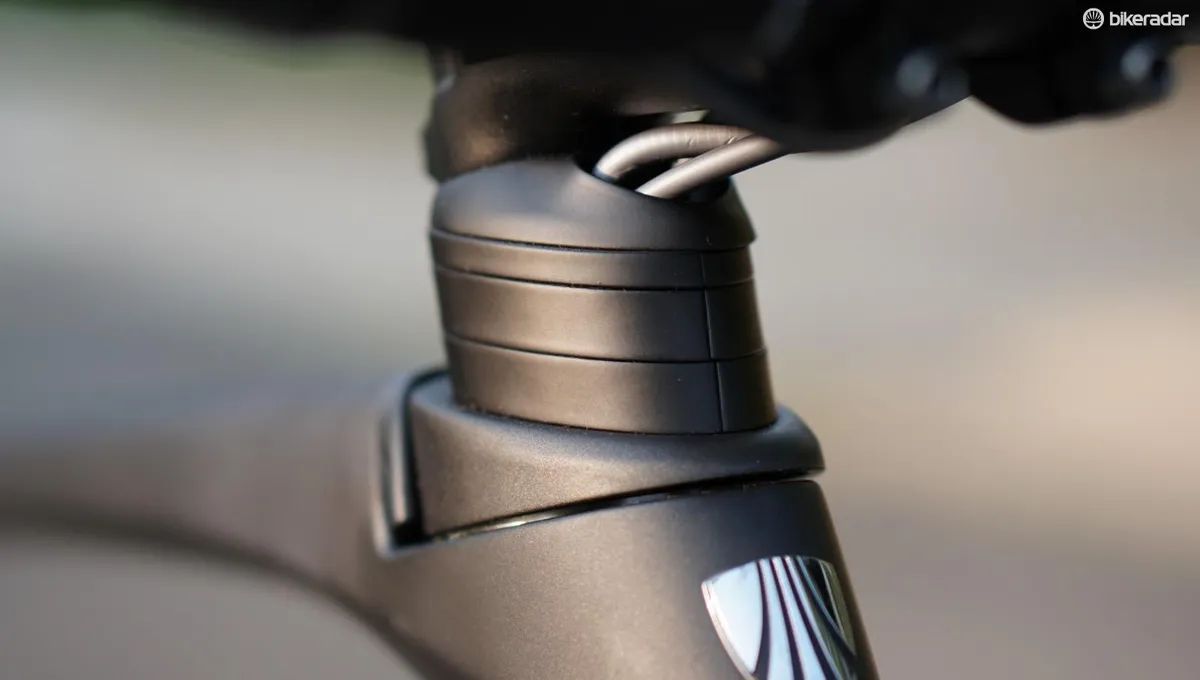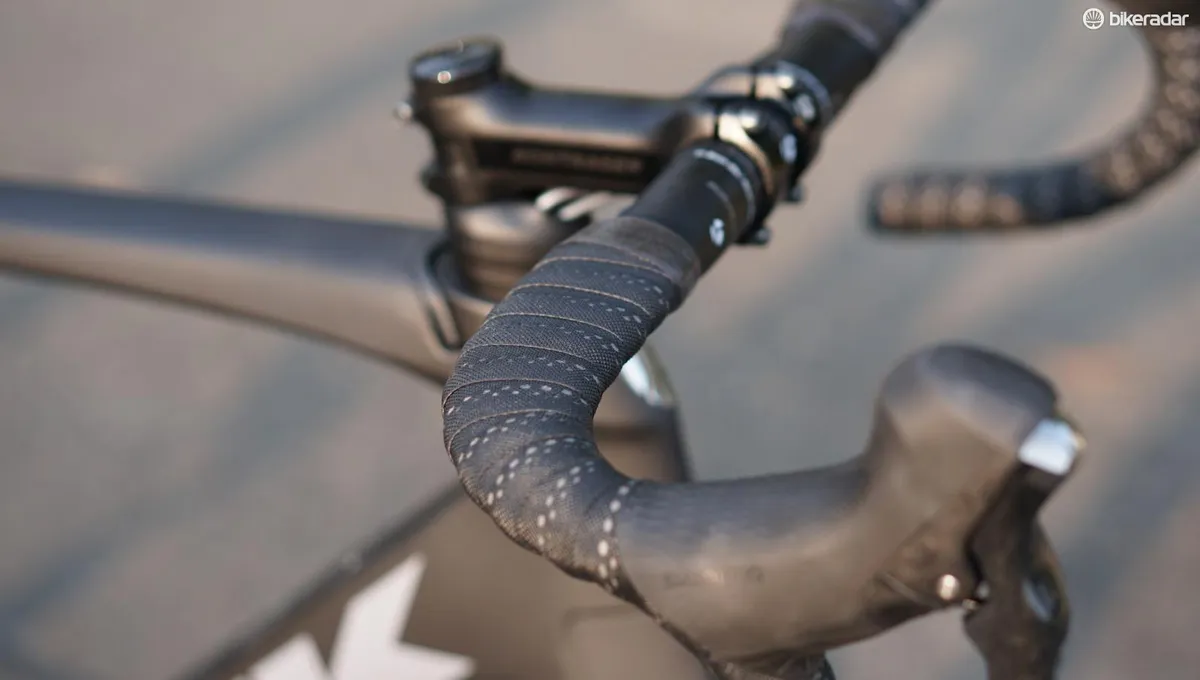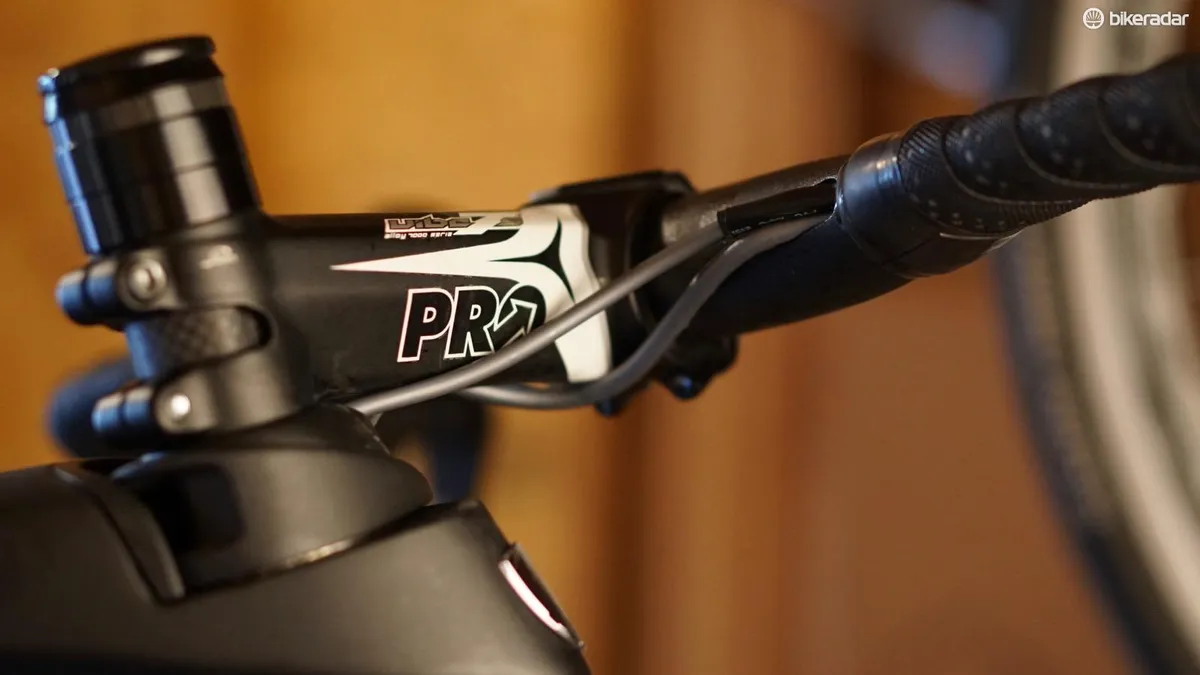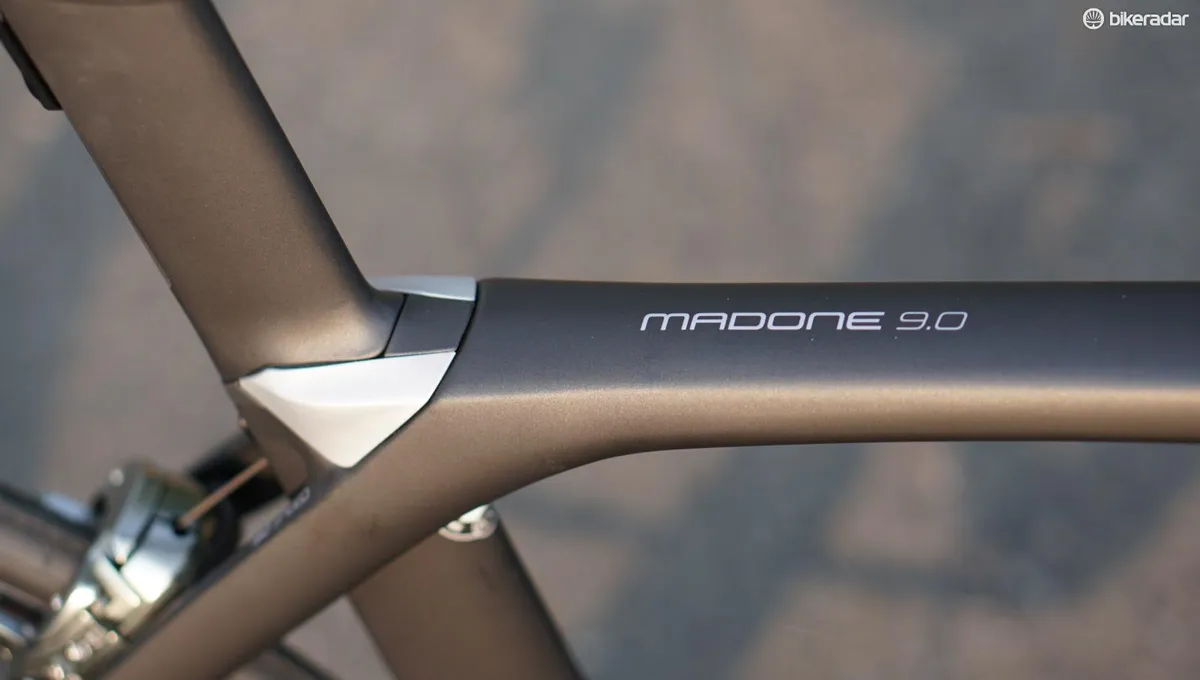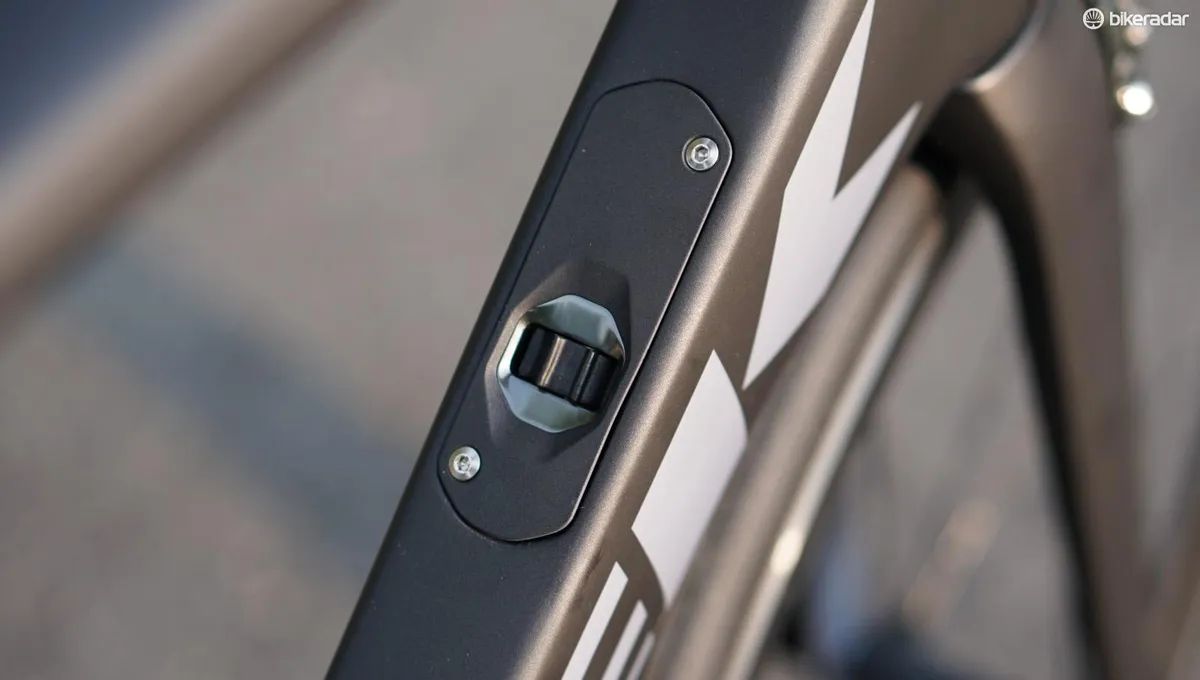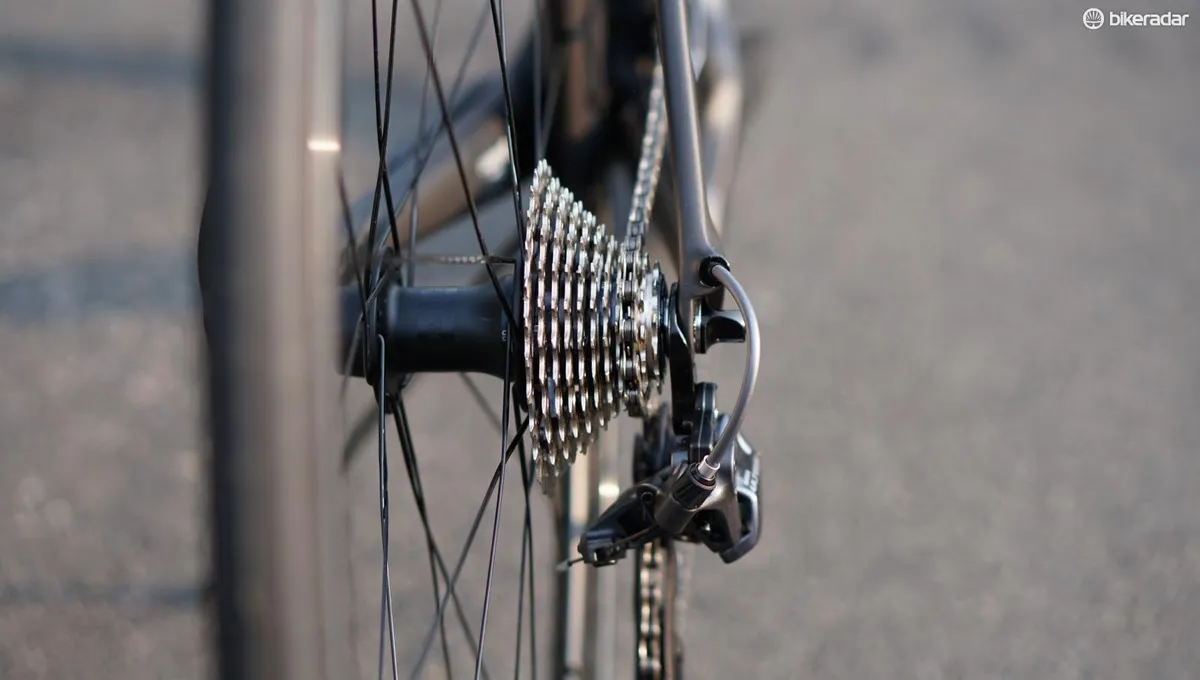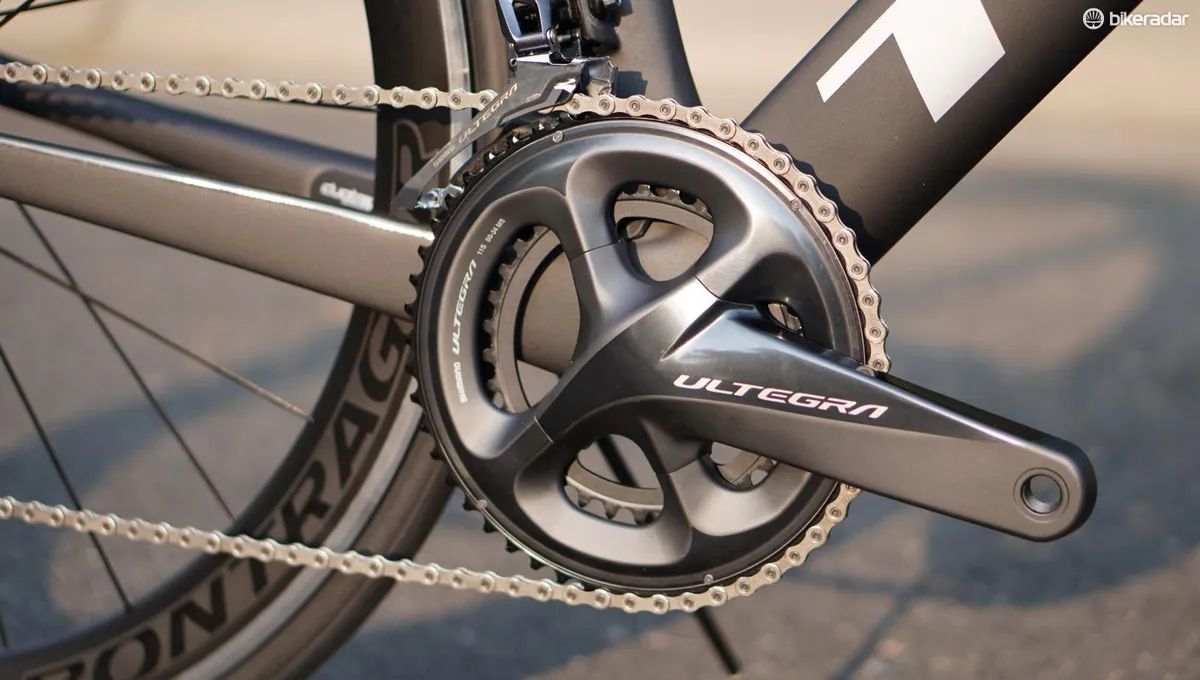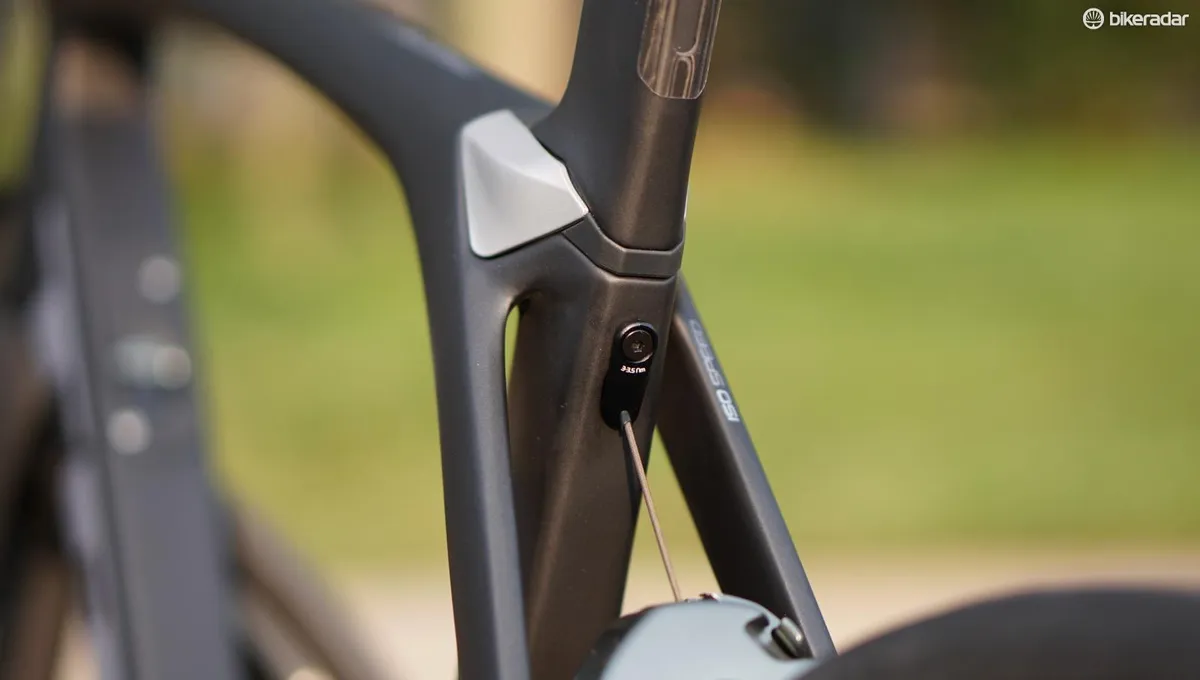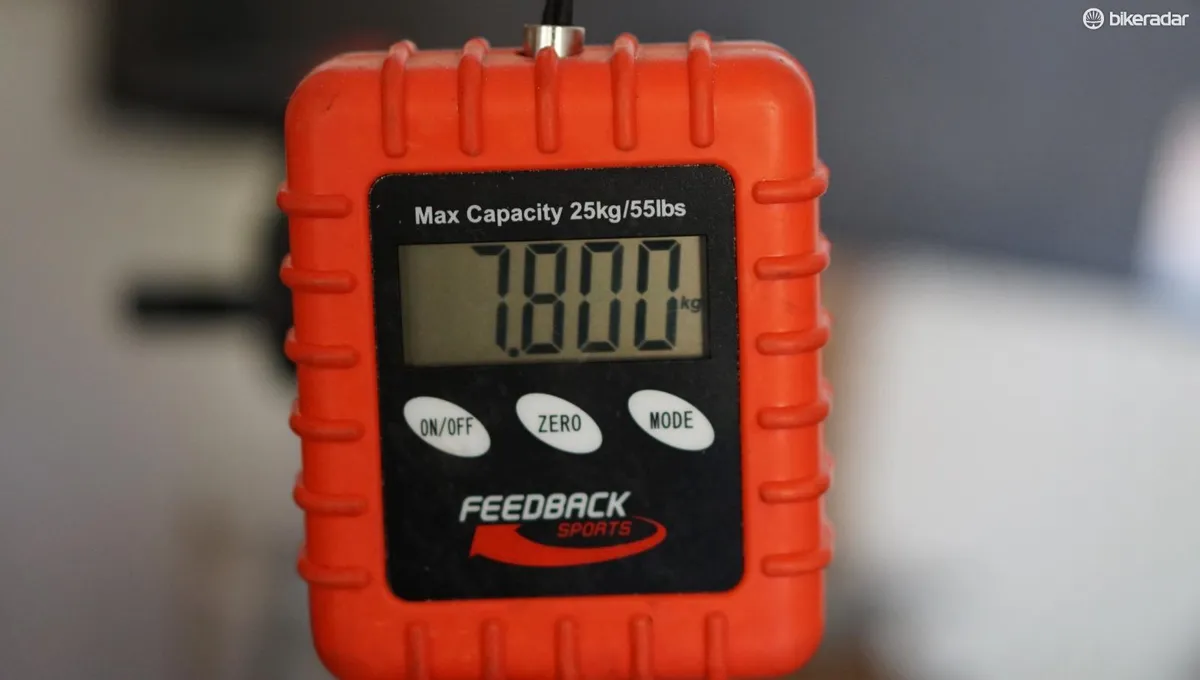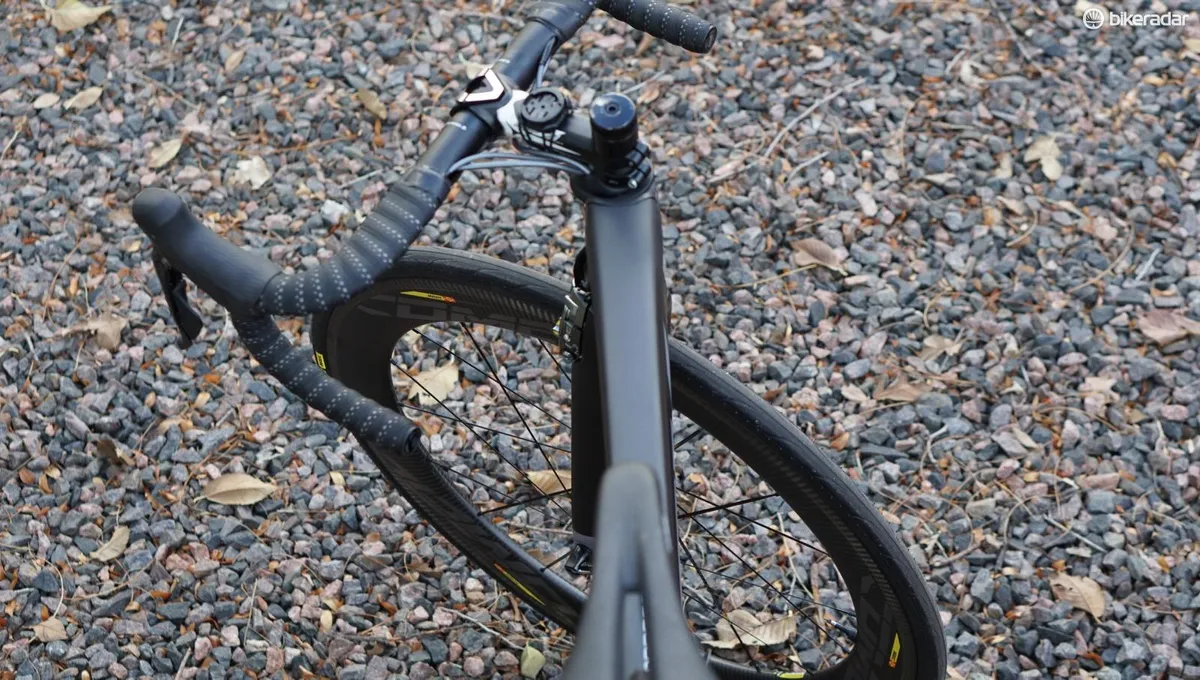The Trek Madone is the most comfortable aero bike I've ridden by a long shot, and its ultra-clean front end and massive, sculpted tubing deliver not only a fast but a luxuriously quiet ride. There are no sloppy cables whistling in the wind here.
The catch? This magic carpet comes with a tight fit window: the front end is a touch high for a race bike, the seatmast's vertical adjustment is limited, and the front wheel has toe overlap and a limited turn radius. But if you fit, you will fly.
- Tunnel test video: How slippery should your aero road bars be?
- How to ruin an aero road helmet (don't do this!)
- 10 of the best deep aero wheels lab tested
Trek Madone 9.0 highlights
- Same frame and fork as $12,000 / £12,000 / AU$13,499 Madone 9.9
- Normal stem and adjustable aero handlebar
- Shimano Ultegra group with Madone Aero brakes
- Bontrager Aeolus Comp Tubeless Ready 50mm wheels
- 50-62cm sizes, four color options
- $3,999 / £3,500 / AU$5,499
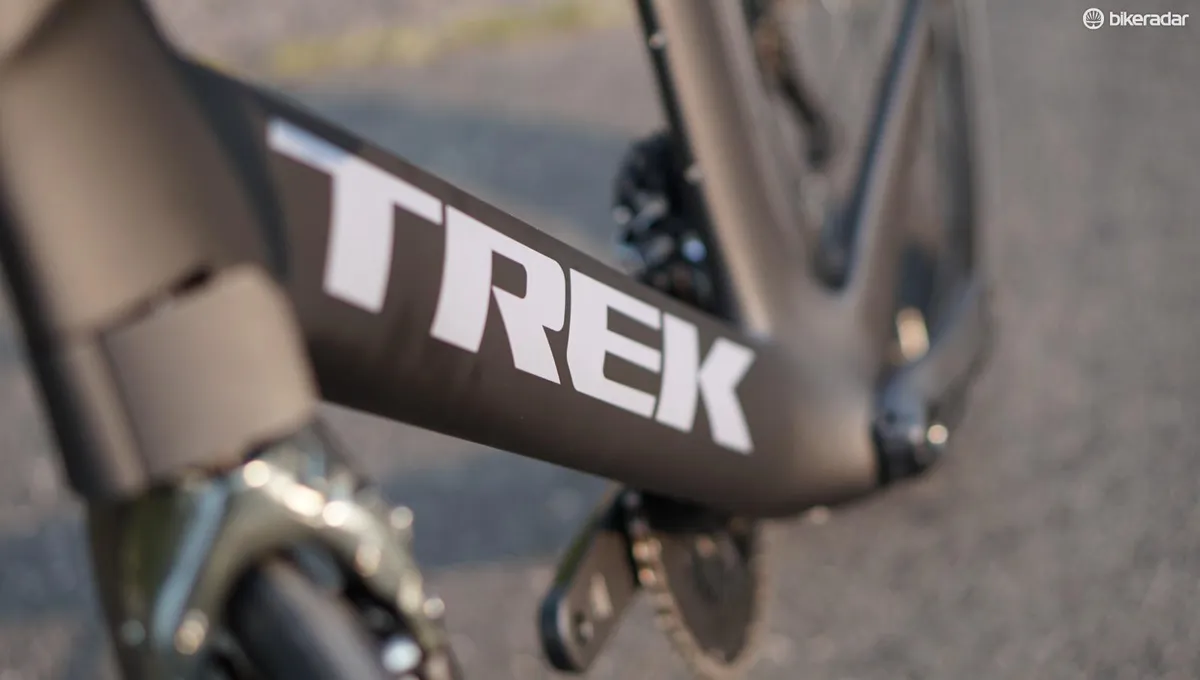
One Madone that breaks (a little) free of certain fit constraints
In late 2015 Trek overhauled the Madone as an ultra-aero race machine, with not only cables but the brakes themselves hidden from the wind. The bike received plaudits from several cycling outlets including BikeRadar for its aero performance and its comfort, thanks largely to Trek's IsoSpeed flex design, which allows the seat tube and seatmast to flex as one.
But while the bike managed to avoid the typical pitfall of early aero bikes — they're fast, but they ain't comfy — it did proceed with a typical aero compromise of ergonomic adjustability in favor of an ultra-clean integrated bar/stem that is demonstrably faster.
For context, most major companies with a high-end aero bike sell it with some form of integrated bar/stem, for the same reason: it's aerodynamically faster than a round bar and normal stem by a significant margin. Most companies claim at least a 4-watt improvement. (A good aero bike has a total drag number in the 70-watt range.)
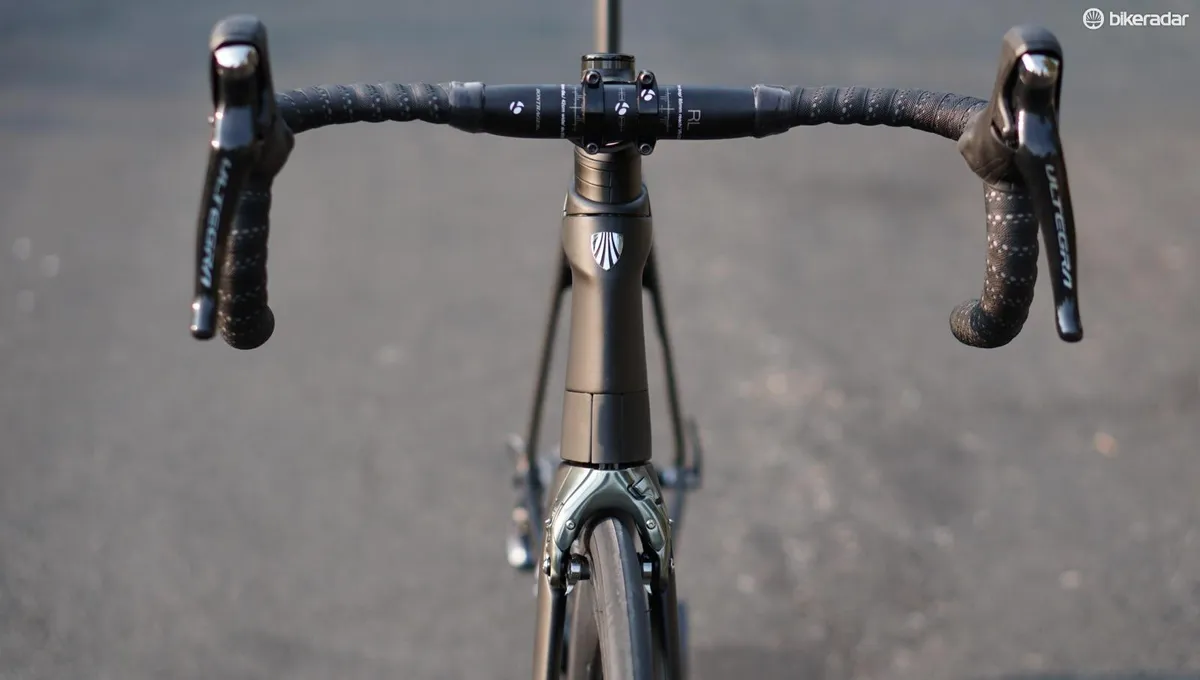
And while integrated bar/stem cockpits work well for many riders, some people would prefer particular bar shapes, or bar angles, or at least the ability to make changes. With an integrated design, you get what you get.
The Madone 9.0 is the first Madone to come with separate bar and stem components. Yes, it's marginally slower in a wind tunnel, but you can easily adjust the bar angle or, like I did, replace the stock stem as needed.
Front and rear fit constraints — versus the competition
Like most of the other Madone bikes, the 9.0 comes in Trek's H2 fit. The lower H1 fit is only available in Project One, which adds $1,500 to the price.
As such, the Madone 9.0 has a slightly taller stack height than other aero bikes. Stack is the vertical difference between the top of the head tube and the center of the bottom bracket. Front-end height comparisons are often done with head-tube measurements, but this doesn't account for differences in various bikes' bottom bracket heights.
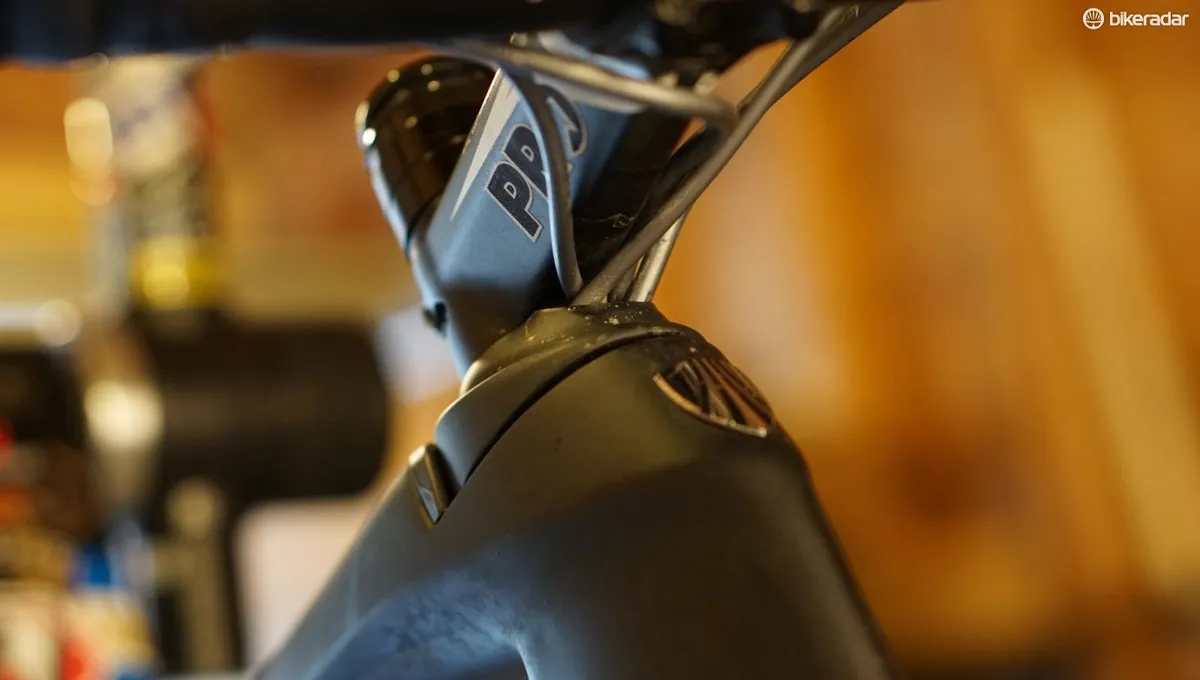
For comparison in size 56cm bikes, Canyon's Aeroad has a stack of 55cm, Specialized's Venge ViAS a 56.4cm and Cervélo's S5 a 56.5cm to the Madone's 58.2cm.
All the Madone sizes have a relatively tight saddle adjustment window. The 56cm bike has a saddle height range of 67-76cm.
For me, at 6ft with short legs, I had the saddle all the way up to 76cm and a 120cm stem all the way down, and would have appreciated another centimeter or two of handlebar drop. Fit, of course, is highly personal — just be sure the bike always fits you, whatever it is!
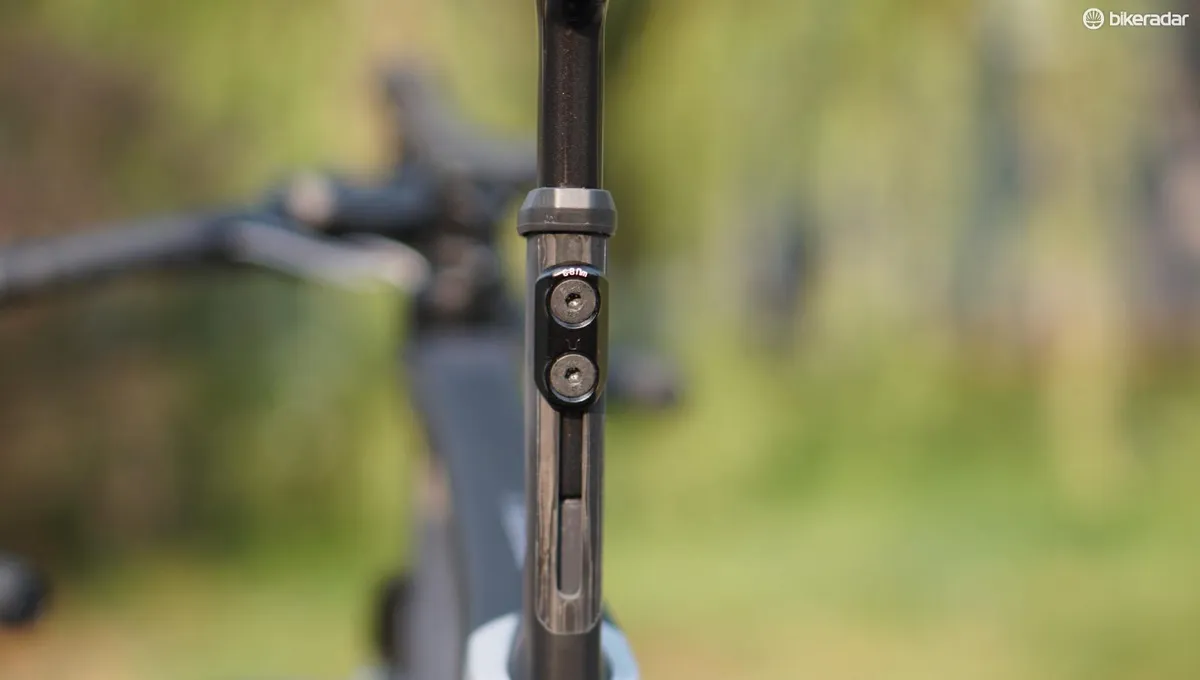
Aero brakes: decent power and, gasp, a delight to work on
Trek isn't the first company to experiment with hiding the brake calipers from the wind, but I believe they have done the best job thus far. By extending the frame's front section to house the front brake cable, Trek reduced drag substantially compared with bolting a standard caliper on the front of the fork.
The little cuckoo-clock panels flip open when you turn the bars, allowing the brake and housing room to move. (No cuckoo bird pops out, though, unfortunately.)
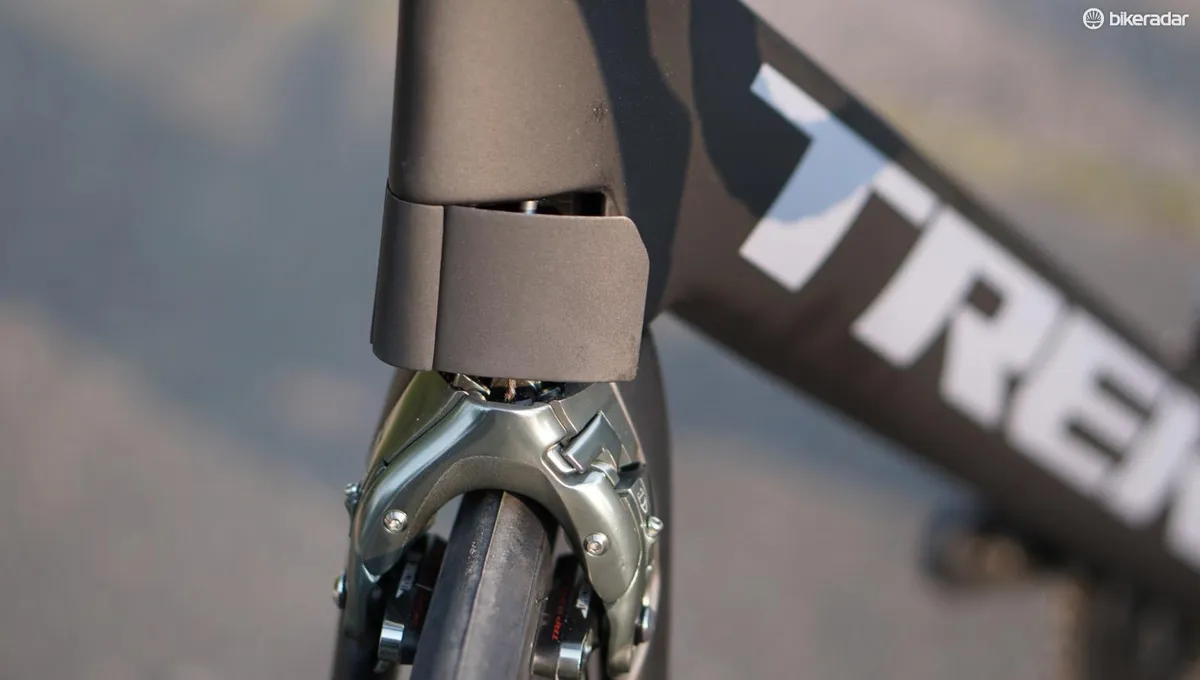
I hate rim calipers positioned underneath a frame's bottom bracket. At best, they are a chore to work on, and quickly gather grime. At worst, they are a literal drag, causing brake-pad rub when out of the saddle. Trek keeps the Madone's rear brake where it should be — up on the seatstays.
The power is decent for a rim brake. A Dura-Ace caliper it ain't, but modulation is predictable. The spectrum of aero brakes runs from horrible/dangerous to pretty good. These are pretty good. I tested the bike quite a bit with carbon wheels as well, where the power is adequate when used with SwissStop pads.
Perhaps most surprising to me was how easy it is to work on the brakes. Swapping and then adjusting the pads is easier than on most standard calipers. Seriously. In the absence of a barrel adjuster, Trek has a screw to adjust width on each side, and another to adjust toe angle.
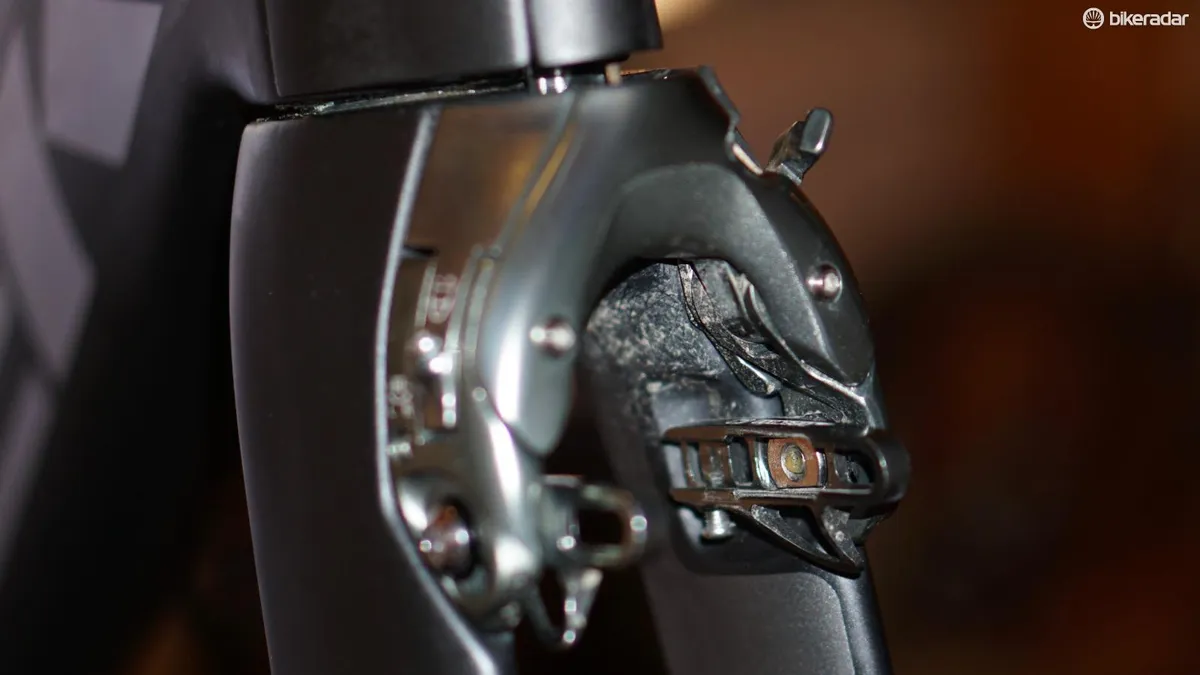
Ride quality: a magic carpet
By now, you have probably seen enough aero-drag graphs and charts to understand that aero shapes are faster than round shapes, especially at higher speeds. I did not take the Madone into a wind tunnel, but my friend Dan Cavallari at VeloNews did. You can get his data and conclusions versus the Specialized Venge ViAS here. I did take the bike out for a few hundred miles, often on fast group rides and solo jaunts, and the thing is tangibly faster than a round-tubed bike with box-section wheels. During the year I switch between a number of test bikes, and the back-to-back rides really highlight differences.
Two things stand out with the Madone. It's fast! (Of course, your body position is the major factor here. But with that normalized, the Madone is perceptibly quick.) And two, it is more comfortable than many standard road bikes, never mind aero bikes, thanks to the full-flexing seatmast and seat tube.
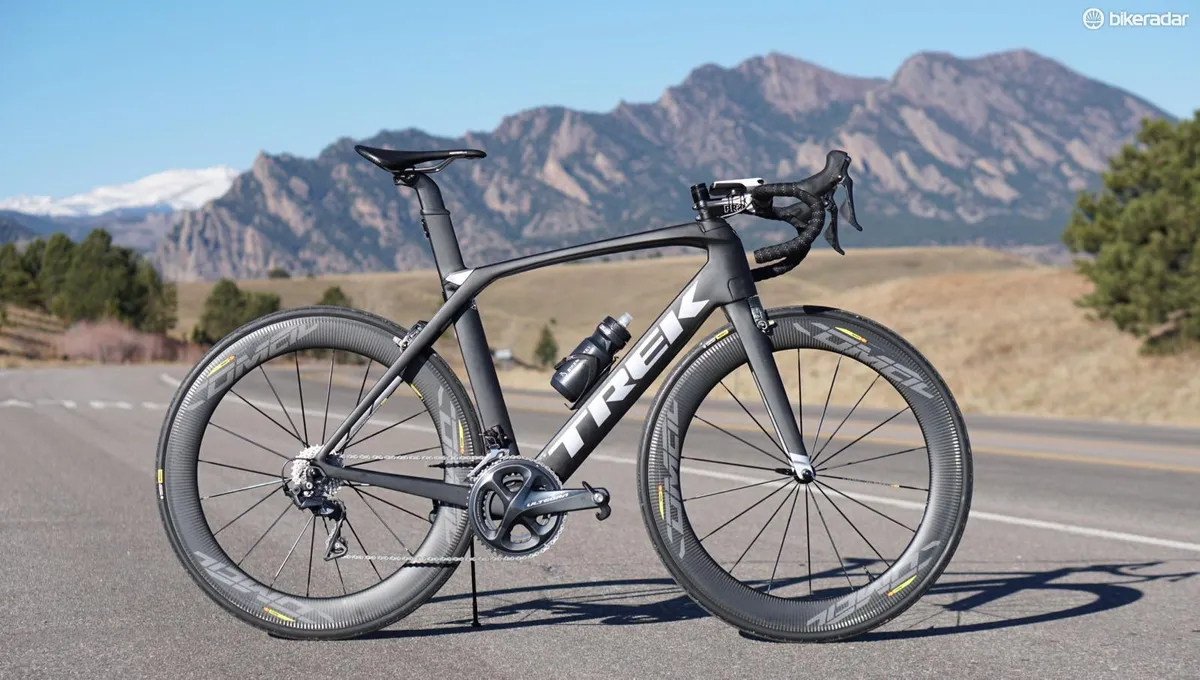
I have an older Scott Foil that I love racing crits on, and while I ride it on dirt roads, it's not my first choice for mixed-surface riding. The Madone, on the other hand, I'd take on any ride.
With Trek's stout BB90 chassis, you still get plenty of firm pedaling efficiency when in and out of the saddle.
The wheel depth of the Bontrager Aerolus Comp 5's is manageable in crosswinds. I rode the bike on many gusty days and did a few days with Mavic's new 65mm Comete Pro Carbon SL tubeless wheels. On one fast group ride, I managed to plow straight into a pothole deep enough to crack the Mavic rear rim. After checking everything out — and opening the rim brake caliper — I rode back home without incident. Would I have crashed on a stiffer aero bike? Who knows. But I can say it is nice to have a forgiving frame underneath you when unexpected bumps and holes appear.
Wheels and components
The Bontrager Aeolus Comp 5 wheels can be set up tubeless but come with 25mm standard clinchers and tubes. Although not as light as all-carbon hoops, the aerodynamics of the metal-rim-with-carbon-fairing design are very similar. And you get the more consistent braking of an alloy track. A downside is that they can take in water at the spoke holes. (There is a hole on the side to release the water.)
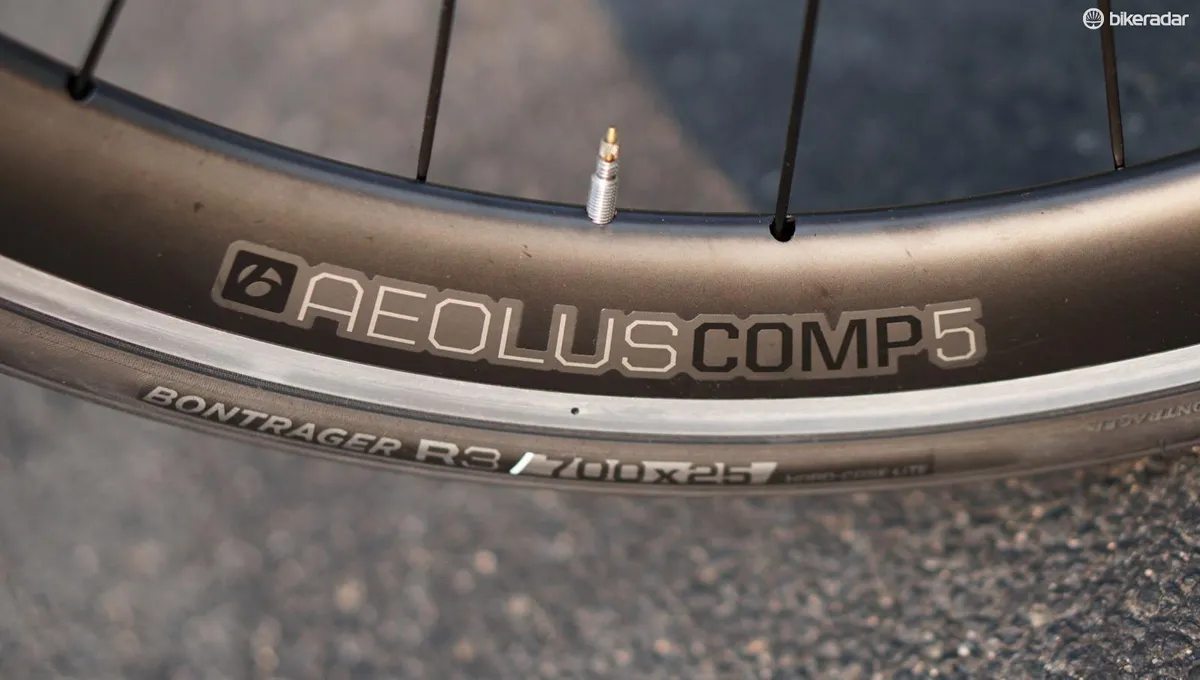
Current-edition Shimano Ultegra continues the Japanese company's fine tradition of an excellent second-tier group that for all intents and purpose functions very much like Dura-Ace but with a few more grams. My one gripe with the mechanical Ultegra is how the inner shift lever on the lefthand control can pop slightly outside the primary brake lever on rattling roads. It doesn't affect performance at all, but it's annoying. Dura-Ace levers don't do this.
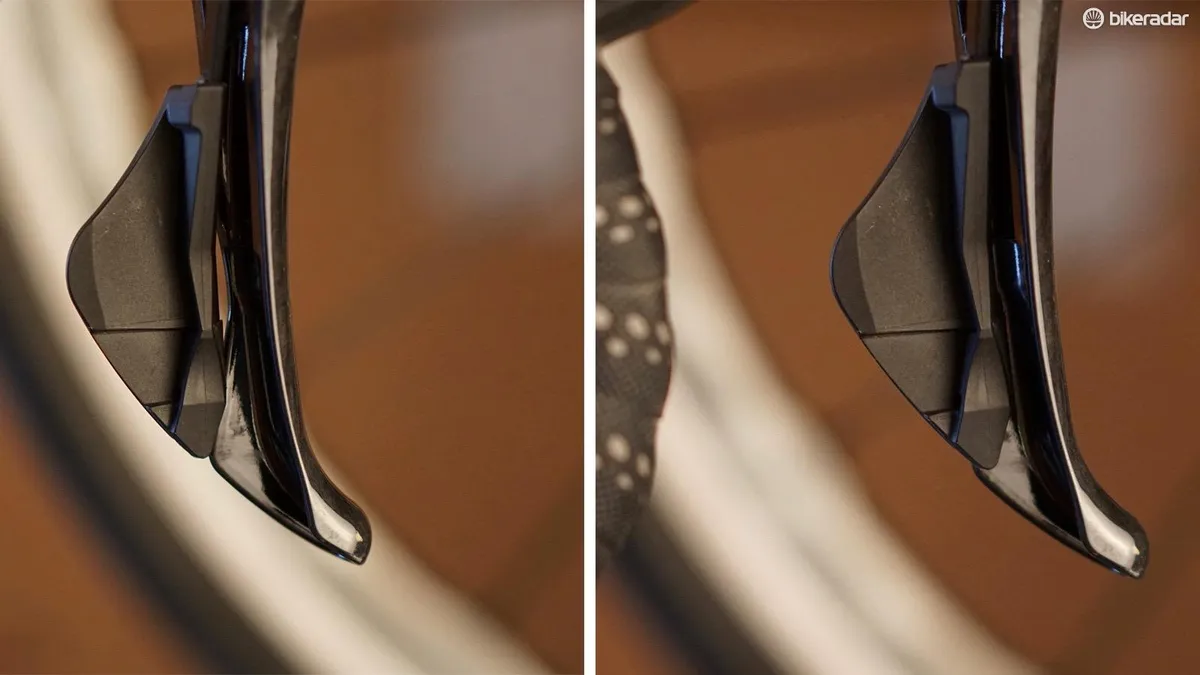
One curious spec choice is the compact 50/34t crank. When paired with the 11-28t cassette this is a great everyday setup, but it seems like amateur racers, in particular, would be drawn to such an aero bike. They might want, if not necessarily need, a 52/36t crankset. If this is a concern, it is likely that your local Trek dealer could swap it out for you. I suspect that, like the H2 geometry, Trek studies customer fit data carefully, and makes decisions based on the bulk of rider numbers.
Bottom line: Certainly the most comfortable and among the fastest aero bikes on the market
The Trek Madone fuses two seemingly incompatible traits: it is a very fast and very comfortable bike. The 9.0 build is the most inexpensive — but still not cheap — model, and the only one with separate and therefore adjustable stem and handlebar.
If you want to look at third-party aero numbers, check out Dan Cavallari's VeloNews piece where he put the top-end Madone against the top-end Specialized Venge ViAS in the A2 Wind Tunnel and found the Venge to be faster. For context, A2 found both to be faster than Cervélo's S5.
The fit, as discussed, is Trek's H2 geometry, which is slightly higher at the front end than other aero bikes. As with Trek's Emonda, a lot of riders will get toe overlap on the Madone, because of its short and sharp front end. So investigate carefully before you buy — but if everything fits, I doubt you will be able to find a bike as fast and comfortable as this one.
